Pittsburgh’s cultural landscape is constantly evolving, and much of that transformation is guided by the visionaries at the Pittsburgh Cultural Trust. We sat down with Anastasia James, Director of Galleries & Public Art, who plays a critical role in shaping the public art experience across Downtown Pittsburgh. She shares information on her curatorial philosophy, the future of accessible art, the impact of public installations, and how she translates her vision into the vibrant exhibitions in the Trust’s gallery spaces. Take an inside look how Pittsburgh’s public art scene comes to life.
Anastasia James, Director of Galleries & Public Art at the Pittsburgh Cultural Trust Talks Latest Updates and Future
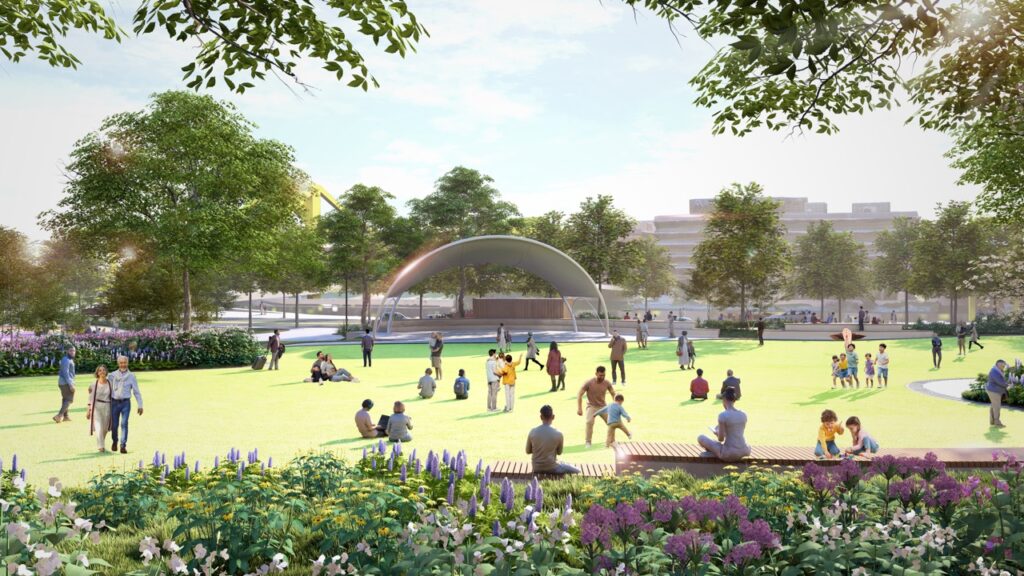
Digital rendering of Arts Landing (new civic space).
You are very artist-oriented in your outlook. How did your interest in artists and their process come about? How does spending time with artists inform your decision-making?
Anastasia James: My interest in artists and their processes began during my first role as a Curatorial Assistant at The Andy Warhol Museum, working within Warhol’s personal archive. Immersed in that material, I learned that process is as vital as product in shaping an artist’s work. That early experience grounded my approach in close looking and listening, empathy, and deep respect for creative practice—values that have guided me throughout nearly two decades in the field.
At the Pittsburgh Cultural Trust, this perspective informs my work commissioning large-scale, site-responsive public art and guiding artists through complex civic projects, including the forthcoming Arts Landing initiative. These collaborations require a balance of vision and pragmatism—translating artistic ideas into the fabric of the city. The artist Sir Isaac Julien, once described me as a “dramaturge,” someone who quietly and carefully shapes the arc of a vision, which I took as the highest compliment. Whether curating, commissioning, or directing public art initiatives, I aim to use my influence with care to help artists and curators realize their ambitious ideas. Ultimately, I believe artists are both the historians and the visionaries of our time. They show us who we are and imagine who we might become, simultaneously helping us see the present more clearly while also charting paths toward more expansive and compassionate futures.
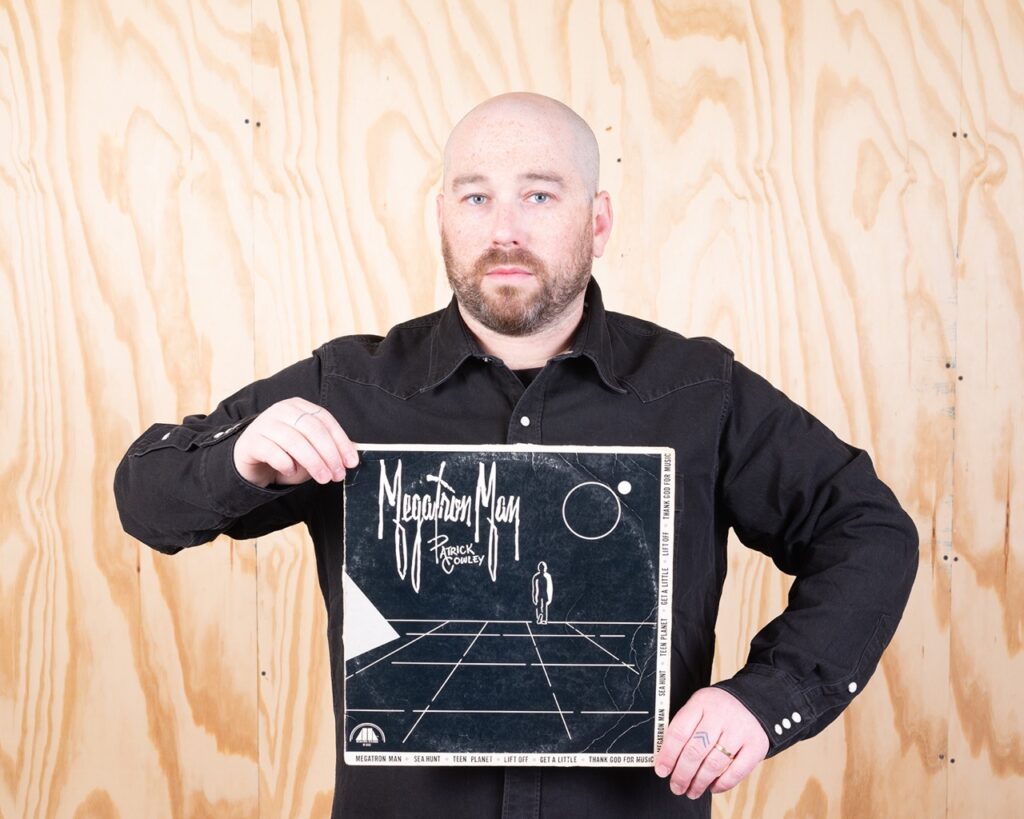
Ben Schonberger: Hi-NRG at 707 Gallery.
Do you have any particular favorites among the artists you’ve gotten to know and had a chance to work with? What was unique in your experience with them?
AJ: I have had the privilege of working with some of the most visionary artists and cultural producers of the twentieth and twenty-first centuries—including George Lucas and many others—but what stands out most for me are the relationships that develop and evolve over time.
At the Pittsburgh Cultural Trust, my goal has been twofold: to bring global conversations to Pittsburgh, and to ensure that our regional artistic community is integral to that dialogue. I’m interested in what sustainable, long-term collaboration looks like—how artists and institutions can grow together, responding to shifting urgencies and shared questions. The Trust’s ongoing partnerships with artists such as Lenka Clayton and Phillip Andrew Lewis, Thaddeus Mosley, and Sharmistha Ray exemplify this approach. Each collaboration evolves in dialogue with the moment, expanding into new mediums or revisiting ideas seeded years earlier. These sustained relationships model a more ecological form of curating rooted in care, reciprocity, and continuity rather than short-term spectacle ensuring that Pittsburgh remains a place where artists can both exhibit and build the next chapters of their work.
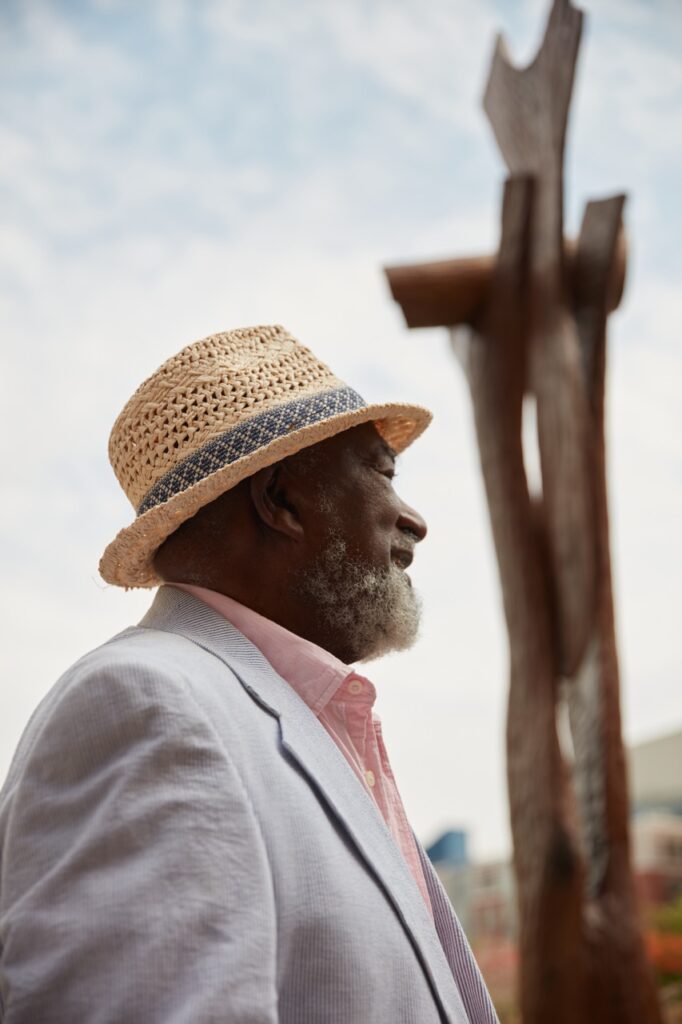
Thaddeus Mosley with installation: Four Monument Sculptures.
How do the visual arts nourish Pittsburghers? How do they help address and resolve moments of crisis, whether social, economic, or personal?
AJ: The visual arts nourish Pittsburghers by creating spaces of possibility, places where ideas, histories, and futures intersect. In moments of crisis, whether social, economic, or personal, art gives us tools for renewal, reflection, and connection. These aren’t abstract beliefs for me—the arts in Pittsburgh quite literally gave me my life’s work. It was here that I first discovered what it meant to live among artists, to learn from their processes, and to see how creativity can build community and belonging.
The arts are also a vital economic driver. Pittsburgh’s creative sector supports thousands of jobs across the region—from artists and fabricators to educators, designers, and nonprofit professionals—and plays a central role in sustaining downtown and neighborhood economies alike. When we invest in the arts, we are not only investing in artists, but also the city’s workforce and sustainability.
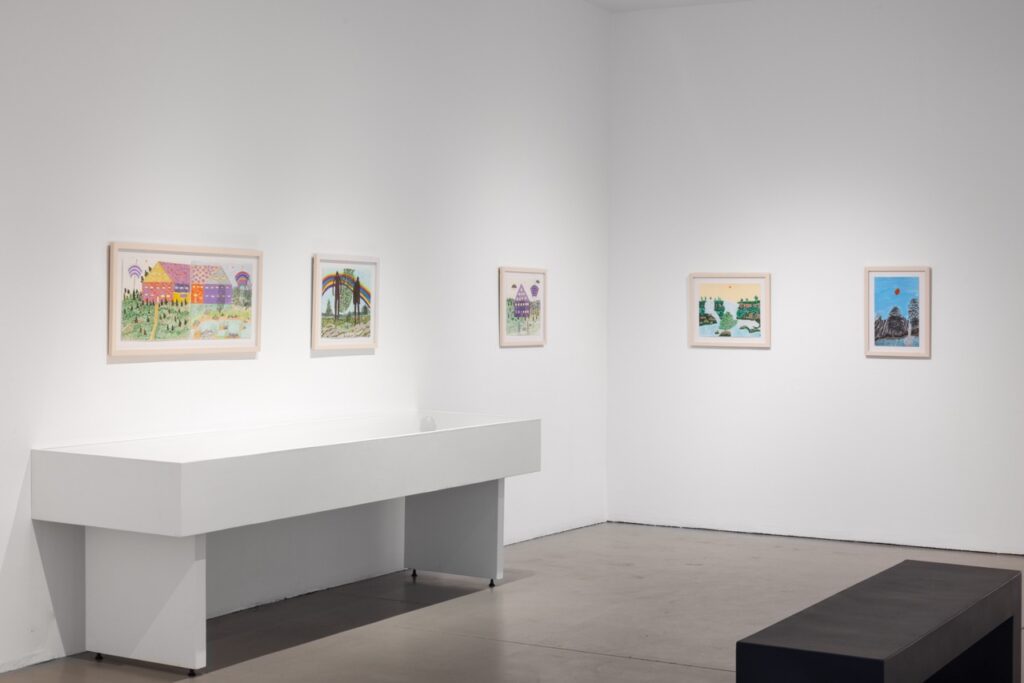
Kim Bond’s We Are Not Alone in collaboration with VaultArt.
How does the Cultural Trust look to ensure that its visual arts programming resonates with Pittsburgh’s wonderfully diverse communities? How do you include people who might feel excluded from traditional arts spaces?
AJ: The Pittsburgh Cultural Trust’s visual arts program is rooted in building relationships between artists, audiences, and communities who have often been excluded from institutional narratives. My focus has been on cultivating inclusive, trust-based partnerships that expand access and redefine what participation looks like.
A key example is the Trust’s multi-year and ongoing collaboration with VaultArt Studio, a project of Achieva, which centers artists with disabilities as vital contributors to the city’s cultural landscape. This model: listening before programming, co-creating rather than inviting after the fact, embodies our approach. We also take pride in partnering with smaller non-profits to help them realize exhibitions and program they might not otherwise be able to produce due to funding or space constraints. These collaborations are mutually enriching: they allow us to share resources, amplify underrepresented voices, and introduce different audiences to one another, expanding our city’s cultural network in authentic and lasting ways. This is all to say that, inclusion, for us, is not a static goal but an evolving practice – one grounded in generosity, proximity, and the belief that high quality arts programming should be accessible to everyone.
Additionally, I would be remiss not to note that all of the Trust’s visual arts exhibitions and programs are free and also easily accessible by public transportation from any part of the city.
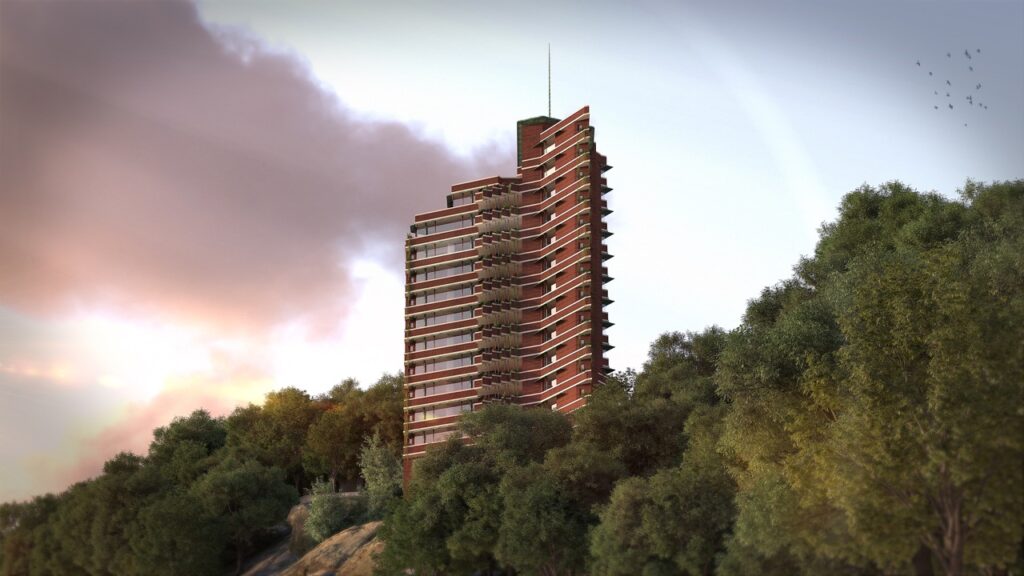
Photo of Frank Lloyd Wright Work Showing at 820 Gallery.
What upcoming performances, exhibitions, or community events are you most excited about, and what makes them particularly meaningful for Pittsburgh audiences right now?
AJ: We have an incredible season ahead, including a major collaboration with the Westmoreland Museum of American Art and Fallingwater recently profiled in The New York Times; a large-scale group exhibition at SPACE Gallery celebrating 45 years of creativity at Pittsburgh’s CAPA High School; and a solo exhibition by Point Park University professor Ben Schonberger at 707 Gallery. This December, we’ll open Emergent Realities at Wood Street Galleries—a newly commissioned exhibition by Carnegie Mellon professor Sharmistha Ray featuring original animations and a score by Grammy Award–winning musician Arooj Aftab.
After more than a year of planning and community dialogue, we’ve also refocused programming at Wood Street Galleries—a historic alternative exhibition space operated by the Trust and perched above downtown Pittsburgh’s T station that has, for over 30 years, championed new and emerging forms of media. Responding to the city’s creative pulse, we’re expanding into more experimental territory that integrates sound, performance, and live electronic music.
One of the most exciting new initiatives is Fourth River, a fully subsidized electronic music residency and professional training program launched in partnership with The Rising Artist Foundation and local collective Honcho. The program supports regional musicians through mentorship, workshops, and public industry lectures, culminating in a showcase at Wood Street. For Pittsburgh audiences, this evolution reflects the Trust’s mission—to honor our city’s legacy as a hub of artistic experimentation while creating new points of access and opportunity across art, music, and technology.
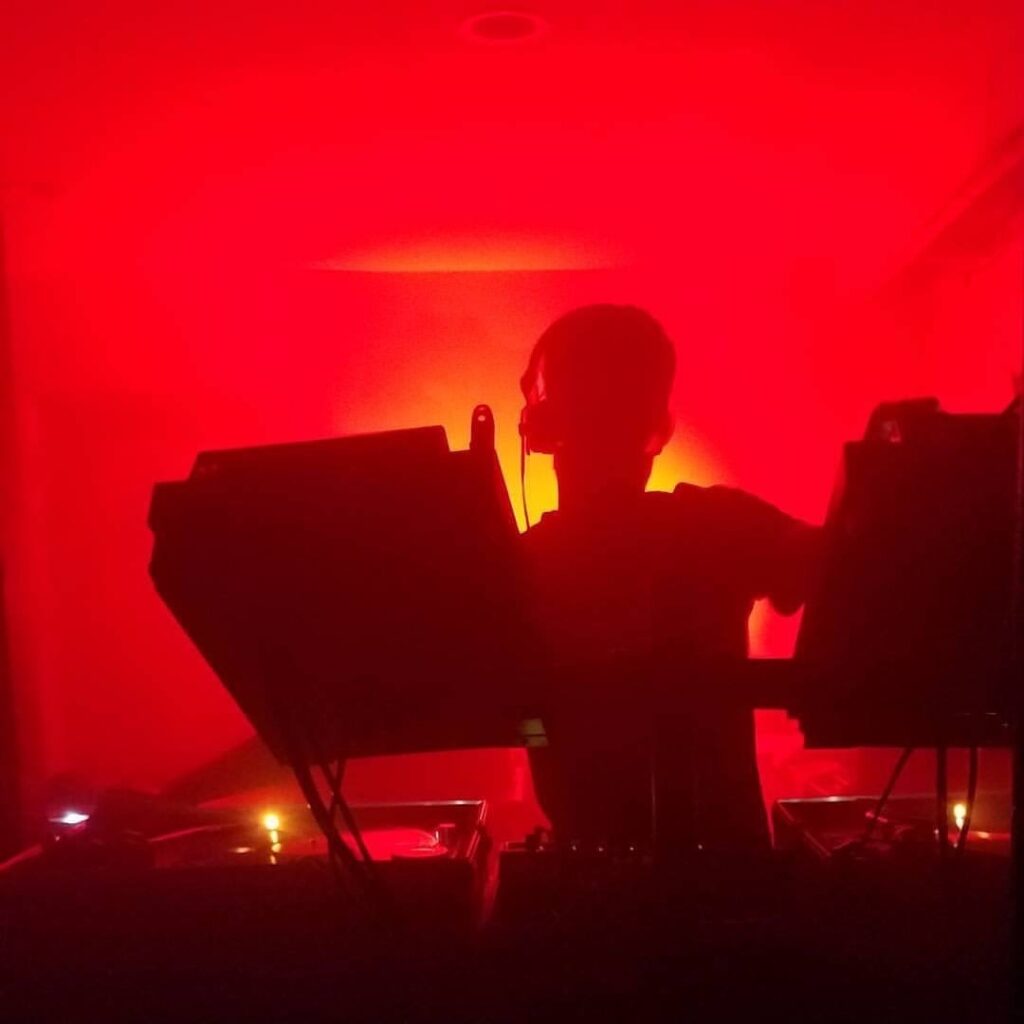
Naeem of the Fourth River Music Residency Program.
More information about upcoming exhibitions and programs can be found here: https://trustarts.org/pct_home/visual-arts. Or on our instagram @trustvisualarts.
Story by Keith Recker
Featured Photo Courtesy of Michael Parente
Photos Courtesy of The Pittsburgh Cultural Trust
Subscribe to TABLE Magazine‘s print edition.
